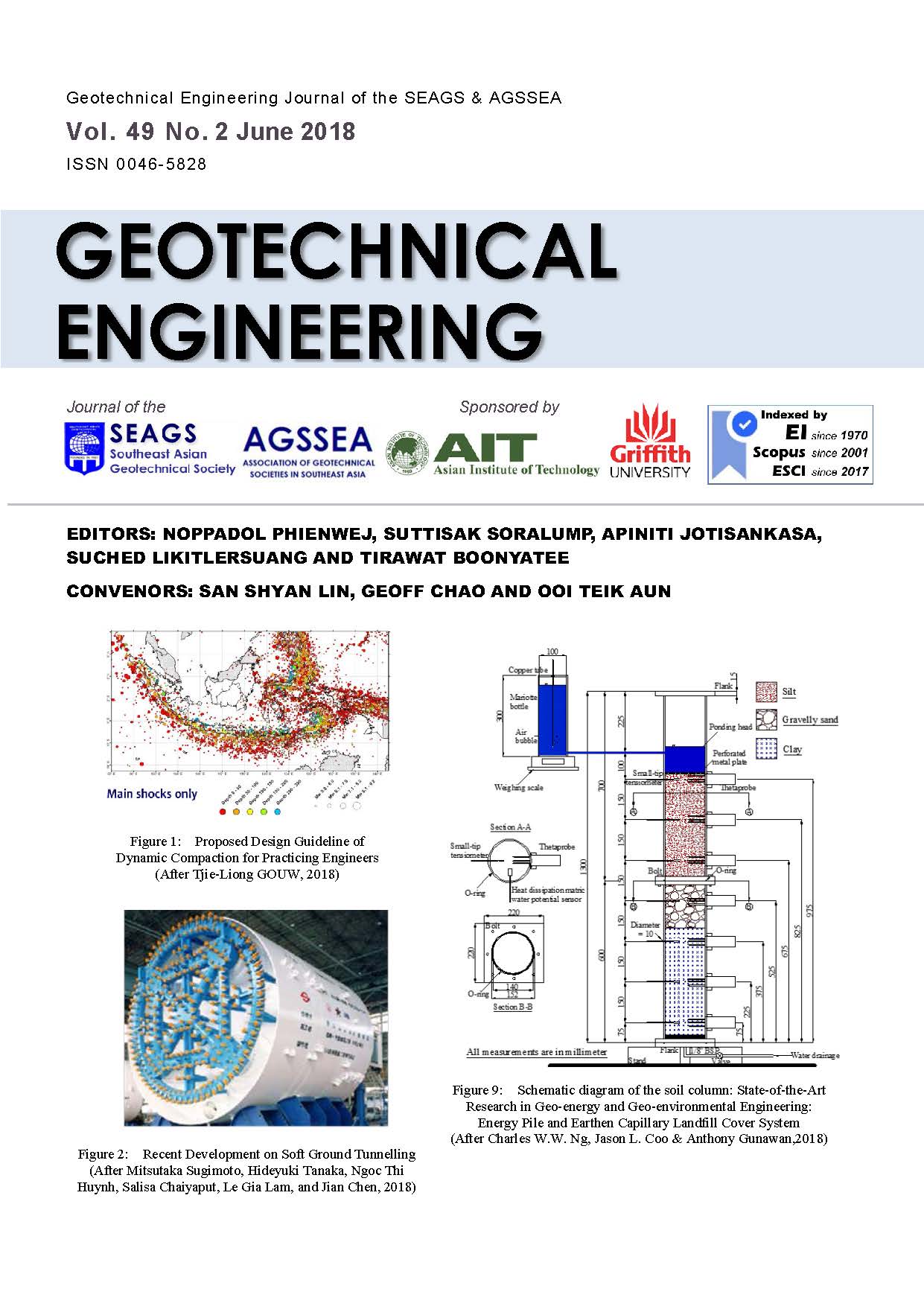State-of-the-Art Research in Geo-energy and Geo-environmental Engineering: Energy Pile and Earthen Capillary Landfill Cover System
Main Article Content
Abstract
Geo-energy and geo-environment are two branches of geotechnical engineering representing current and future grant challenges because of the pressing need to conserve energy and protect the environment. The Hong Kong University of Science and Technology has been actively seeking solutions to these two challenges. The first part (geo-energy) of this paper describes a series of novel cyclic heating and cooling centrifuge tests performed on replacement and displacement floating energy piles installed in both saturated sand and clay. The test results reveal that replacement floating energy piles exhibit ratcheting settlement under a constant working load but at a reducing rate when subjected to temperature cycles, irrespective of the type of soil in which they are embedded. On the contrary, displacement floating energy piles exhibit heave behaviour. No existing theoretical model can capture observed ratcheting pile settlement well. This suggests that care must be taken when designing replacement floating energy piles. In the second part (geo-environment) of the paper, a novel three-layer environmentally friendly earthen cover system for climate regions like Thailand, Indonesia, the Philippines, Malaysia and Singapore is investigated through theoretical examination, physical modelling (e.g., one-dimensional soil column and two-dimensional large flume tests), and advanced numerical simulations. This novel cover system consists of a fine-grained soil underneath a conventional two-layer cover with capillary barrier effects. Two-dimensional water infiltration experiments and numerical simulations show that the newly introduced fine-grained soil layer can greatly minimize rainfall infiltration even after a 4-h rainfall event having a return period of 100 years in climate regions. One-dimensional gas emission tests and numerical simulations reveal that a minimum of 0.6 m thick fine grained soil layer compacted at 10% saturation (e.g. those in arid regions) can adequately satisfy the Australian guidelines...
Article Details

This work is licensed under a Creative Commons Attribution-NonCommercial-NoDerivatives 4.0 International License.
Copyright © 2019 Association of Geotechnical Societies in Southeast Asia (AGSSEA) - Southeast Asian Geotechnical Society (SEAGS).


